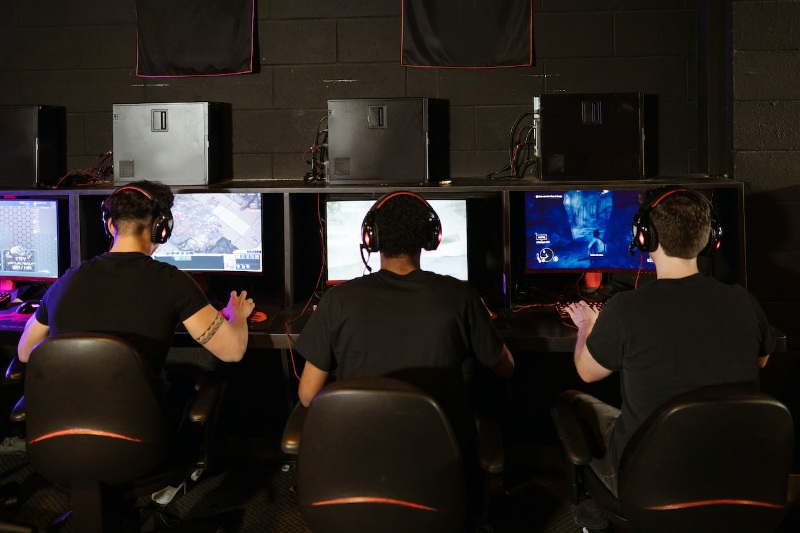Transform Product Demos with Gamification for Better Engagement

Discover how gamification can transform your product demos. Learn the principles, best practices, and benefits of gamifying your SaaS product demonstrations to engage customers and boost sales
I grew up in the 90s and 2000s. I think of my teens as the perfect time (globally) - we had computers, but social media hadn't happened yet. We made friends in chat rooms dedicated to bands we loved, and we were obsessed with PC gaming. How could we not?
Back then, I belonged to a group of avid gamers who lived for strategy gaming. We played all of the Age of Empires and their expansion packs, Rise of Nations and its expansion packs, and even Age of Mythology. We even went on to play the Empire Earth series because of our loyalty to Age of Empires.
It's 20 years later, and I can still feel the thrill of those nights when I went into a campaign. My longest running campaign ended when my father realised I'd been playing non-stop for 19 hours. He unplugged my computer. It's still a sore point in our relationship.
So, when we talk about gamification in SaaS these days, I know exactly what all these marketers are talking about. I lived it. I set my alarms to it. Some of my closest friendships are built around it. I know, at a visceral level, what it's like to play multiple rounds of the same game in a row for the elation of that elusive win. I know how my ego gets involved when I lose, and what a powerful motivator it can be.
But I'm going to assume at least one person reading this blog entry hasn't felt that fire in the belly that keeps you up at 3am, just so you can get past that boss, or finally pwn that opponent.
In that spirit, let's start from the start:
What is Gamification?
Imagine the ideal product demonstration:
It's personal. It tailors the message to resonate with each person in the room, individually.
It's interactive. It engages each and every person in the room to actively engage with the product, actually enticing them away from their phone.
It's rewarding. It makes everyone feel good. Each person in the room feels like they accomplished something. For you as the sales rep, it's rewarding because you've 'shown' the utility of your product rather than telling them about it.
It also feels impossible, right? How do you get personal with everyone in the room at the same time? Or keep them all engaged? Or do the whole 'showing vs telling' thing effectively to a mixed audience with different needs?
Enter gamification.

A seemingly straightforward concept with immense power. It takes the things we love about gaming, and applies them to tasks we don't find as engaging. For instance, the EdTech sector has seen an explosion of online learning platforms that employ gamification techniques to teach everything from Gullah Geechee cooking to Advanced Korean language skills to MBA degrees.
It works, because gamification in learning pulls together competition, satisfaction through achievement, team and individual activities, and tiny rewards into one irresistible cocktail. Of course, students aren't the only ones this works with, and learning isn't the only mundane task that's been made more enjoyable and memorable. Here are a few groups it works brilliantly with:
Prospective Customers: Picture this—engaging and enjoyable product demos that captivate potential buyers. By adding a touch of gamification, you'll not only grab their attention but also help them truly grasp the value your solution brings to their persnickety use case, as well as the features of your product that make it a winner. It's a win-win that sets you apart from the competition.
Sales Teams: Gamification isn't just for customers—it's a secret weapon for training and onboarding your sales teams too. By infusing game elements into product demo training, you'll make it interactive, motivating, and downright effective. Imagine your reps learning about product features, benefits, and objections in a fun and hands-on way. Their product knowledge goes bone deep, and sales are bound to skyrocket.
Internal Teams: Want to level up collaboration and teamwork? With gamified product demos, your internal teams (think developers, marketers, and customer support) can engage like never before. By gamifying the presentation of new product features or updates, you can increase their engagement and understanding of the 'why' behind your product. This can lead to better collaboration, cross-functional knowledge sharing, and alignment within the organization.
Training and Education: Gamification can supercharge training and educational experiences. Imagine guiding users through software features with interactive product demos, allowing them to practice and reinforce their skills in a fun and engaging way.
Trade Shows and Events: Ready to stand out in a crowd? Gamified product demos are your secret sauce at trade shows and events. By adding game elements to your booth or presentation, you'll draw in the masses and encourage them to interact with your product. It's all about leaving a lasting impression and snagging those potential leads.
Design Principles of Gamification: How to make irresistible demos
Gamification doesn't work if it isn't thought through - so if you're randomly adding game elements to your product demos, it doesn't work very well. Design your gamification strategy with the end in mind - the leaderboard that excites your sales trainees won't do anything for your prospects. With that in mind, here are a few design best practices to keep in mind:
Define your objectives and metrics: Before gamifying your product demos, clearly understand what you want to achieve and how you'll measure success. Are you aiming to increase user engagement, retention, learning, conversion, or referral? Having clear objectives and metrics will guide your gamification strategy and help evaluate its effectiveness.
Know your audience: Before designing your gamified product demo, it is crucial to gain a comprehensive understanding of your target audience and their specific requirements. Various customer segments may exhibit distinct preferences, expectations, and pain points. For instance, a technical buyer might prioritize the product's features and functionality, whereas a business buyer may place greater emphasis on the business benefits and outcomes it can provide. Conducting thorough audience research through methods like surveys, interviews, personas, or customer journeys can equip you with valuable insights. Armed with this knowledge, you can customize your gamified product demo to align with their individual needs, objectives, and motivations.
Choose the right game elements and mechanics: Select game elements and mechanics that align with your product's features and benefits, as well as your users' expectations and preferences. Avoid using elements that may undermine your credibility or distract from your message. For instance, if your product revolves around a serious and intricate software solution, employing childish or comical game elements may inadvertently undermine your credibility or divert attention away from your core message. On the other hand, if your product is a simplistic and entertaining app, those comincal game elements are completely on-brand, and augment the fun of your demo!
Align with your value proposition: Ensure that your gamified product demo highlights how your product can help users achieve their desired outcomes. Align your game elements with your value proposition to create a coherent and persuasive narrative. Let's say your main selling point is helping customers save time and money. In that case, you can incorporate game elements that showcase how your product automates tasks, minimizes mistakes, or optimizes resources. Each time a user does this, they can earn time and money points that help quantify the benefits from your product - this way, they get to keep score, and at the same time, realise exactly how much time and money they're saving!
Balance challenge and skill: Strive to provide an optimal level of challenge that matches the user's skill level and learning curve. Avoid making the challenge too high or too low, as it may lead to frustration or boredom.
Provide feedback and rewards: Offer timely, relevant, meaningful, and varied feedback and rewards to keep users motivated and informed about their progress.
Best Practices for Implementing Gamification in Interactive Product Demos
Gamification is not a one-size-fits-all solution. It requires careful planning, testing, and iteration to ensure that it works with your product demo, and enhances its effectiveness. Each implementation has its own pressure points, but as long as you keep the following best practices in your back pocket, you'll steer clear of the most common major hurdles:
Start small and simple. You don't need to gamify every aspect of your product demo. You can start with one or two game elements that are relevant and easy to implement. For example, you can add a simple quiz or a leaderboard to your product demo to test the user's knowledge or to create a sense of competition.
Use existing tools and platforms. You don't need to reinvent the wheel or spend a lot of time and money on developing your own gamification system. Use existing tools and platforms that offer gamification features and services and combine them with your product demo. For example, SmartCue helps both automate demo creation, and makes adding gamification a cinch.
Test and iterate. Ideally, test your gamified product demo with real users before launching it to the public. Collect feedback and data from your friendly users to evaluate the effectiveness and usability of your gamification strategy. Monitor and analyze the user behavior and engagement during and after the product demo. Based on these results, adjust and improve your gamification strategy as needed.
Conclusion
As with anything else you do for the first time, gamification will have its learning curve. However, it's a strategy that yields overwhelmingly positive results. When gamification is done right, you create tremendous recall. Speaking for myself, I've wanted a Volkswagen ever since I watched a video about their Think Blue Trainer (this video doesn't do it justice but it was all I could find). I'm a solopreneur, which means I need 46 hours in my day. But I still make time for my French lesson on Duolingo, because I don't want to break my 72 day learning streak.
Maybe I'm one of those guys who is more susceptible to this kind of messaging, but I doubt it.
Give yourself a learning curve, find ways to get your demos up and ready quickly, and without too much fuss (SmartCue is great at this, just saying!), and iterate your way to a set of high performing, gamified self-service product demos that delight, tease and excite your customers. It's going to be worth it.
Comments
Your comment has been submitted successfully!